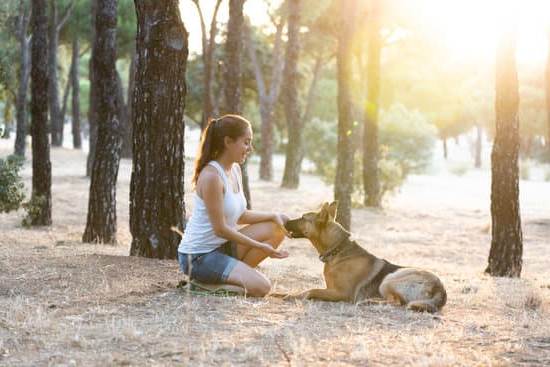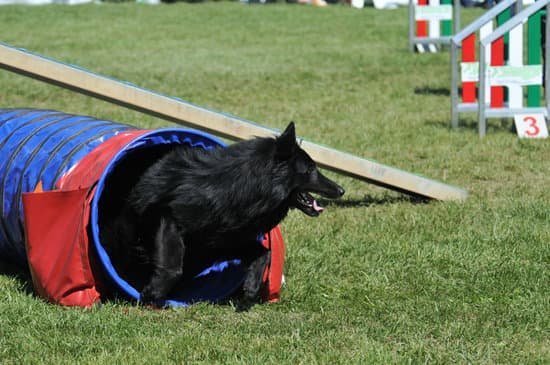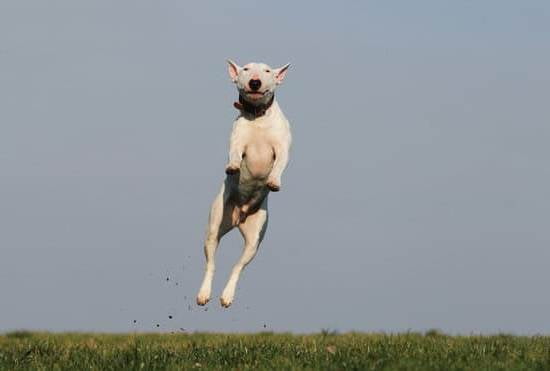Leash walking is an essential skill that every dog owner should teach their furry companion. Not only does it ensure the safety of your dog, but it also helps to improve their behavior and overall well-being. In this article, we will explore the importance of leash walking for your dog’s safety and behavior, as well as provide helpful tips and techniques to effectively train your dog to walk on a leash.
When it comes to ensuring the safety of your dog, leash walking is crucial. By keeping your dog on a leash, you have better control over their movements and can prevent them from darting into traffic or getting into dangerous situations. Leash walking also allows you to easily guide your dog away from potential hazards such as aggressive animals, poisonous substances, or busy roads.
In addition to safety concerns, leash walking plays a significant role in shaping and improving your dog’s behavior. Regular walks on a leash help to establish a sense of structure and discipline in your dog’s routine.
It provides mental stimulation and physical exercise, which are vital for preventing behavioral issues like excessive barking, chewing, or digging. Furthermore, leash training teaches your dog how to walk calmly by your side without pulling or lunging, making everyday outings more enjoyable for both of you.
By understanding the importance of leash walking and its impact on both safety and behavior, you can begin implementing effective training techniques that will benefit you and your furry friend.
In the following sections of this article, we will delve deeper into basic leash training techniques, choosing the right equipment, troubleshooting common challenges during leash walks, reinforcing positive behavior with treats and rewards, graduating from training equipment to off-leash walks gradually, as well as providing additional tips for successful leash walking.
So let’s dive in.
Understanding Basic Leash Training Techniques
Leash training is an essential skill that every dog owner should teach their furry companion. Whether you have a new puppy or an older dog, teaching them to walk on a leash properly is crucial for their safety and behavior. In this section, we will delve into the basic leash training techniques that you can start with to set your dog up for success.
Introduce the Collar and Leash
Before starting any leash training, get your dog accustomed to wearing a collar or harness and having a leash attached. Allow your dog to sniff and investigate the collar and leash before securing them. Keep initial sessions short to prevent any discomfort or resistance.
Teach Loose Leash Walking
The key to successful leash walking is teaching your dog how to walk on a loose leash without pulling or tugging. Start indoors or in a quiet, distraction-free area. Encourage your dog to follow you by using treats as lures, keeping the leash loose all along. Gradually increase the difficulty level by incorporating more distractions and gradually moving outdoors.
Use Positive Reinforcement
Positive reinforcement is crucial in leash training. Reward your dog with treats, praise, and affection when they exhibit desired behaviors like walking calmly beside you or responding to cues such as “heel” or “sit.” This positive association will motivate your dog to continue behaving well on walks.
- Offer small, tasty treats that your dog loves whenever they are walking correctly beside you.
- Pair verbal praise such as “good boy/girl” with treats for added reinforcement.
- Vary rewards so that it doesn’t become predictable, using toys or playtime as alternatives occasionally.
Remember, every dog learns at their own pace, so be patient and consistent throughout the training process. Starting with these basic techniques will lay the foundation for more advanced leash skills in the future. Stay tuned for the next section where we will dive into choosing the right leash and collar for effective training.
Choosing the Right Leash and Collar for Effective Training
One of the key factors in successful leash training for your dog is choosing the right leash and collar. The type of equipment you choose can greatly affect how well your dog responds to training, as well as their overall comfort and safety during walks. Here are some important considerations when it comes to selecting the right leash and collar for effective training:
- Length: The length of the leash can impact your dog’s freedom to explore while still maintaining control. A standard leash length is usually around 6 feet, but you may want to consider a longer leash if you have a larger or more energetic dog.
- Material: Leashes are commonly made from nylon or leather. Nylon leashes are lightweight, easy to clean, and come in various colors and patterns. Leather leashes are durable and often have a more classic look, but require more maintenance.
- Handle: Look for a leash with a comfortable handle that provides a good grip. Padding or foam on the handle can help prevent discomfort or chafing during long walks.
- Collar type: There are several types of collars available, including flat collars, martingale collars, choke chains, and prong collars. It’s important to choose a collar that fits properly and does not cause any discomfort or harm to your dog.
- Harnesses: If your dog tends to pull on the leash or has neck sensitivity, consider using a harness instead of a collar. Harnesses distribute pressure more evenly across your dog’s chest and back, reducing strain on their neck.
| Aspect | Consideration |
|---|---|
| Length | Standard length is around 6 feet |
| Material | Nylon for lightweight and easy cleaning, or leather for durability |
| Handle | Look for a comfortable grip with padding or foam |
| Collar type | Choose a collar that fits properly and is safe for your dog |
| Harnesses | If your dog pulls or has neck sensitivity, a harness can be a good alternative to a collar |
Remember, the right leash and collar will not only help you maintain control during training but also ensure your dog is comfortable throughout the process. It’s essential to choose equipment that aligns with your dog’s size, breed, and individual needs. In the next section, we will provide a step-by-step guide on teaching your dog to walk on a leash.
Step-by-Step Guide
Teaching your dog to walk on a leash is an essential skill that every dog owner should master. Not only does it keep your furry friend safe during walks, but it also promotes good behavior and enhances the bond between you and your dog. In this step-by-step guide, we will outline the process of teaching your dog to walk on a leash.
- Start in a quiet and familiar environment: Begin by introducing the leash to your dog in a calm and familiar setting, such as your backyard or living room. Allow your dog to sniff and investigate the leash while giving them praise and treats for positive behavior.
- Attach the leash: After your dog feels comfortable with the presence of the leash, attach it to their collar or harness. Keep the leash loose initially to avoid any discomfort or resistance from your dog.
- Engage in simple exercises: Once the leash is attached, encourage your dog to follow you by walking a few steps forward. Use verbal cues such as “let’s go” or “walk” to signal them when it’s time to move forward. Remember to reward them with treats or praise for staying by your side.
- Practice loose-leash walking: As your dog becomes more comfortable with walking on a leash, guide them toward proper loose-leash walking technique. If they start pulling or lunging, stop walking immediately and wait until they calm down before continuing. Reward them for walking beside you instead of pulling ahead.
- Gradually increase distractions: As your dog becomes proficient at walking on a leash in familiar surroundings, gradually introduce distractions into their environment. Start with mild distractions such as toys or low-level noises and gradually progress to more challenging ones like other dogs or busy streets.
- Repeat and reinforce: Consistency is key when training your dog to walk on a leash. Set aside regular practice sessions throughout the day and make sure to reinforce positive behavior with treats, praise, or rewards. Over time, your dog will become more comfortable and obedient on walks.
Remember, teaching your dog to walk on a leash takes time and patience. Be sure to approach the training process with a positive attitude and celebrate each milestone your dog achieves. With consistent practice and reinforcement, you and your furry companion will soon be enjoying safe and enjoyable leash walks together.
| Training Step | Description |
|---|---|
| 1. Start in a quiet and familiar environment | Introduce the leash calmly in a familiar setting, using treats and praise for positive behavior. |
| 2. Attach the leash | Safely attach the leash to your dog’s collar or harness while keeping it loose initially. |
| 3. Engage in simple exercises | Encourage your dog to follow you by walking a few steps forward, reinforcing their behavior with treats or praise. |
Troubleshooting Common Leash Walking Challenges
Leash walking can sometimes be a challenging endeavor, particularly when your dog exhibits behaviors such as pulling, lunging, or reactivity. These behaviors can make walks stressful and unpleasant for both you and your furry companion. However, with patience and consistency, these challenges can be overcome. Here are some tips to troubleshoot common leash walking challenges:
- Pulling: If your dog tends to pull on the leash during walks, it is important to address this behavior early on. One effective technique is the “stop and go” method. Whenever your dog starts pulling, simply stop in your tracks and wait for them to calm down.
Once they do, reward them with praise or a treat and continue walking. Consistently applying this technique will teach your dog that pulling does not result in forward progress and that walking nicely by your side leads to rewards. - Lunging: A dog that lunges during leash walks can be a danger to themselves and others. It is crucial to identify the triggers that cause this behavior and work on desensitizing them through positive reinforcement training techniques.
Start by keeping a safe distance from the trigger, such as another dog or a busy road, while redirecting your dog’s focus onto you using treats or toys. Gradually decrease the distance over time as your dog becomes more comfortable and responsive. - Reactivity: Reactivity towards other dogs or people is another common challenge faced during leash walks. It is essential to work on socialization skills through controlled interactions with other dogs in a controlled environment under the guidance of a professional trainer if necessary. Additionally, paying attention to body language cues from both your own dog and others can help prevent unwanted reactions before they occur.
Remember that troubleshooting leash walking challenges requires consistency, patience, and positive reinforcement training techniques. Seek guidance from a professional trainer if needed, as they can provide tailored advice and help address any specific challenges you may be facing. With time and effort, you and your canine companion can enjoy pleasant and stress-free leash walks together.
Reinforcing Positive Behavior
When it comes to leash training your dog, reinforcing positive behavior is crucial for success. By using treats, praise, and rewards, you can effectively communicate to your dog what you expect from them during leash walks. This positive reinforcement helps to strengthen the desired behavior and encourages your dog to continue walking calmly on a leash.
One effective technique for reinforcing positive behavior during leash training is to use treats as rewards. Choose small, bite-sized treats that are highly appealing to your dog. Keep these treats handy in a treat pouch or pocket so that you can quickly reward your dog when they exhibit the desired behavior.
For example, when your dog walks beside you without pulling on the leash or lunging towards distractions like other animals or objects, immediately offer them a treat and verbal praise like “Good job” or “Yes.”. This immediate reward allows your dog to associate the specific behavior with the positive outcome of receiving a treat.
In addition to treats, verbal praise and physical rewards such as petting or playing can also be used as positive reinforcement during leash training. Dogs thrive on attention from their owners, so using verbal praise like saying “Good boy/girl.”
in an enthusiastic tone can go a long way in motivating them. Additionally, giving your dog a quick scratch behind the ears or offering them a favorite toy after they have successfully walked without any issues can reinforce their good behavior and create a positive association with being on a leash.
Ultimately, using treats, praise, and rewards in leash training not only reinforces positive behavior but also makes the training process enjoyable for both you and your furry companion. It creates an atmosphere of trust and cooperation between you and your dog while ensuring that they understand what is expected of them during leash walks.
Remember to be consistent in rewarding desired behaviors and always have patience while working with your dog. With time and practice, you will see improvements in their leash walking skills and enjoy many pleasant walks together.
Gradual Progression
Introduction to Transitioning from Training Equipment to Off-Leash Walking
Once your dog has mastered walking on a leash with the appropriate training equipment, you may be ready to take the next step towards off-leash walking. However, it’s important not to rush this process and ensure that your dog is fully prepared for the increased freedom and responsibility that comes with being off-leash. Gradual progression is key when transitioning from training equipment to off-leash walking to ensure your dog’s safety and success.
Building Reliability and Recall
Before attempting off-leash walking, it’s crucial to reinforce your dog’s recall command. This command will have a significant impact on their ability to listen to you when they are off-leash. Practice recall exercises in safe and controlled environments, gradually increasing distractions as your dog becomes more reliable in responding to the command.
Using positive reinforcement, such as treats or praise, whenever your dog comes when called will strengthen their association between recall and positive experiences. Be consistent with your commands and rewards during these training sessions, ensuring that your dog understands the expectations.
Start in Controlled Environments
Begin by allowing your dog off-leash in a securely fenced area or an enclosed space free from potential dangers. Start in an environment where there are minimal distractions and gradually increase the level of difficulty over time. This could include introducing new environments with more distractions or practicing off-leash walking around other people or dogs.
Always keep safety as a top priority by closely supervising your dog during this transition period. It may be helpful to keep a long-line attached to your dog’s harness initially so that you have some control if needed while still giving them some freedom.
Safety Precautions
As you commence off-leash walking, make sure your dog is wearing identification tags with up-to-date contact information. This is a crucial precaution in case they accidentally become separated from you. Additionally, consider using a GPS collar tracker, which can provide an added layer of security.
When choosing off-leash areas, it’s essential to abide by local laws and regulations. Many jurisdictions require dogs to be under voice control and have reliable recall before allowing them off-leash. Always respect public spaces, other people, and their pets when enjoying off-leash walks.
By following these gradual progression techniques for transitioning from training equipment to off-leash walking, you can ensure a smooth and successful experience for both you and your dog. Remember that every dog learns at their own pace, so be patient and consistent with your training efforts.
Additional Tips and Tricks for Successful Leash Walking
Use Positive Reinforcement
One important tip for successful leash walking is to use positive reinforcement. Positive reinforcement involves rewarding your dog for good behavior, such as walking calmly on the leash without pulling or lunging. This can be done through treats, praise, or toys. When your dog exhibits the desired behavior, immediately reward them with a treat and give them verbal praise. This will help to reinforce the idea that walking calmly on the leash is a positive behavior that leads to rewards.
Be Consistent and Patient
Consistency and patience are key when it comes to successful leash walking. Dogs learn best through repetition and consistency, so it’s important to be consistent with your expectations and training methods. Use the same commands and signals every time you walk your dog on the leash, and be patient with them as they learn. Remember that learning new behaviors takes time, so don’t get discouraged if progress is slow at first.
Practice in Different Environments
Another tip for successful leash walking is to practice in different environments. Dogs may behave differently in different settings, so it’s important to expose them to various distractions and situations during training.
Start by practicing in a quiet area with few distractions, then gradually increase the level of difficulty by introducing more distractions such as other dogs or people. By exposing your dog to different environments, you’ll help them generalize their leash walking skills and become more confident in various situations.
Seek Professional Help if Needed
If you’re experiencing difficulties with leash walking despite following all the tips and tricks mentioned above, don’t hesitate to seek professional help. A professional dog trainer or behaviorist can provide guidance tailored specifically to your dog’s needs and help address any specific challenges you may be facing.
They can assess your dog’s behavior, provide additional training techniques, or suggest alternative tools or methods that may be more effective for your dog. Remember, every dog is unique, and what works for one may not work for another, so don’t hesitate to reach out for professional assistance when needed.
Frequently Asked Questions (FAQs) about Leash Training
Leash training can be a complex process, and many dog owners have questions about how to effectively train their dogs to walk on a leash. In this section, we will address some frequently asked questions about leash training.
- Q: How long does it take to train a dog to walk on a leash?
- A: The time it takes to train a dog to walk on a leash can vary depending on the individual dog and their previous experiences. Some dogs may pick up leash walking quickly, while others may require more time and patience.
It is important to remember that consistency and positive reinforcement are key when training your dog. With regular practice and reinforcement of desired behaviors, most dogs can learn to walk politely on a leash within several weeks. - Q: My dog keeps pulling on the leash during walks. What can I do?
- A: Pulling on the leash is a common challenge faced by many dog owners. One effective technique is the “stop-and-start” method. When your dog starts pulling, simply stop and stand still. Wait for your dog to relax and release tension on the leash before continuing the walk. By consistently reinforcing this behavior, your dog will learn that pulling leads to no progress in their walk.
- Q: Are certain breeds easier or harder to leash train?
- A: Different breeds may have varying levels of difficulty with leash training due to their natural instincts or characteristics. For example, working or herding breeds may have a higher prey drive and be more prone to pulling or lunging on the leash.
However, this does not mean that these breeds cannot be successfully trained to walk calmly on a leash. With consistent training techniques and proper guidance, any breed can learn how to walk politely on a leash.
By addressing these commonly asked questions about leash training, you will have a better understanding of what you can expect during the training process and how best to handle any challenges that may arise. Remember that each dog is unique, so be patient and tailor your training methods to suit your dog’s individual needs. With dedication and positive reinforcement, you can enjoy peaceful and enjoyable walks with your canine companion.
Conclusion
In conclusion, leash walking is a crucial aspect of training for your dog’s safety and behavior. Through this article, we have discussed the various techniques and steps involved in leash training, as well as troubleshooting common challenges that may arise. By using positive reinforcement and rewards, you can reinforce positive behavior in your dog during leash walking sessions.
Leash walking provides numerous benefits for both you and your furry friend. It allows you to maintain control over your dog’s movements, ensuring their safety in potentially dangerous situations. With proper leash training, your dog will also learn to walk calmly and politely on a leash, reducing the risks of pulling, lunging, or reactivity.
Furthermore, leash walking provides an opportunity for exercise and mental stimulation for your dog. Regular walks contribute to their physical well-being by keeping them active and fit. Additionally, exploring different environments during walks helps stimulate their senses and satisfies their curiosity.
Remember that patience is key when it comes to leash training. Every dog is unique and will progress at their own pace. Stay consistent with your training methods and always provide positive reinforcement. With time and practice, you will witness significant improvements in your dog’s behavior during leash walks.
By dedicating time and effort to properly train your dog on the leash, you are providing them with a safe and happy experience whenever they venture outside with you. So take the knowledge gained from this article, apply it consistently during training sessions, and enjoy the benefits of a well-behaved and contented canine companion on your next walk together.
Frequently Asked Questions
How do you train a dog to walk on a leash beside you?
Training a dog to walk on a leash beside you requires consistent and patient effort. Start by introducing your dog to the leash gradually, allowing them to sniff and explore it before attaching it to their collar or harness. Begin walking with your dog on a loose leash, giving them treats and praise for staying by your side.
If your dog starts pulling, stop walking and wait until they calm down before proceeding again. Use a command like “heel” or “walk with me” consistently during walks to signal your expectation for them to stay beside you. Reward good behavior with treats and positive reinforcement to encourage your dog to continue walking calmly by your side.
How do I train my dog to walk on a leash without pulling?
Training a dog to walk on a leash without pulling requires consistent training and reinforcement of good behaviors. Start by ensuring that your dog has the proper equipment such as a well-fitting harness instead of just relying on a collar, as this will reduce the strain on their neck when they pull. Begin walks in an area with minimal distractions, where it is easier for your dog to focus on you.
Hold the leash firmly but not tightly, keeping it short enough that there is no slack for pulling but not so short that it restricts their movements. Reward good behavior by providing treats and praise when your dog walks next to you without pulling, which helps reinforce this desired behavior over time.
What is the #1 trick to stop your dog pulling on the leash?
The number one trick to stop your dog from pulling on the leash is teaching them the “wait” or “stop” command whenever they start pulling. This involves stopping completely whenever your dog pulls on the leash and waiting for them to calm down before resuming walking again. It’s important not to move forward until there is no tension in the leash and your dog shows signs of relaxation or attention back towards you.
This technique teaches dogs that pulling does not lead them closer to what they want, instead reinforcing that staying calm allows for continued movement forward. Consistency is key in using this technique, and it may take time for your dog to understand the correlation between pulling and being stationary. It’s also crucial to reward your dog with treats and positive reinforcement when they walk calmly next to you without pulling, encouraging them to continue practicing good leash manners.

Welcome to the blog! I am a professional dog trainer and have been working with dogs for many years. In this blog, I will be discussing various topics related to dog training, including tips, tricks, and advice. I hope you find this information helpful and informative. Thanks for reading!





